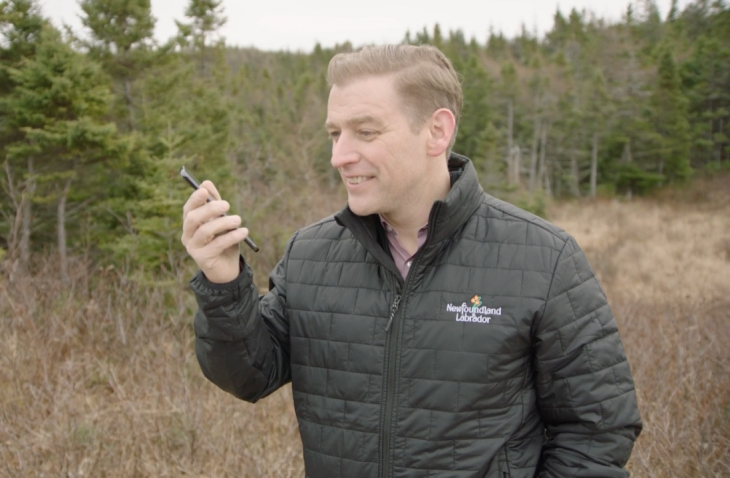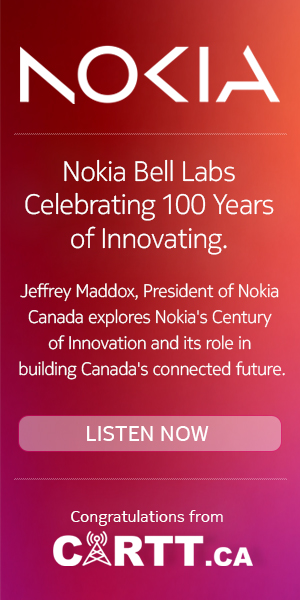
By Ahmad Hathout
The department of Innovation, Science and Economic Development (ISED) has launched Monday a consultation on opening up certain mobile spectrum bands for use by satellite service providers to address dead spots in areas that are difficult to reach for on-the-ground mobile networks.
The department that handles spectrum auctions said in the consultation document it is considering applying a supplemental mobile coverage by satellite (SMCS) framework to the 600 MHz, 700 MHz, 800 MHz cellular, AWS-1, AWS-3, and the Personal Communications Systems (PCS) bands for shared use with satellite operators, but is broadly asking if other bands should be considered as well.
The consultation comes as mobile and satellite service providers in Canada and the United States come together to expand mobile service in areas that terrestrial network operators have difficulty reaching. The U.S.’s Federal Communications Commission in March approved its satellite-to-mobile framework, and in December, Rogers and Lynk Global completed the first satellite-to-mobile phone call using the Samsung S22 smartphone after the cable giant announced a partnership last spring with Lynk and SpaceX to get the technology rolling.
ISED notes that, in recent years, handset manufacturers have taken a renewed interest in adding mobile satellite service (MSS) technology in smartphones to take advantage of the advent of broadband satellite service. That wasn’t so much the case in the 1990s, when limited interest was torpedoed by the high cost of the technology.
“ISED indicated in the 2023 Outlook that a new regulatory framework will likely be required to address such integrated services and that given the potential benefits for Canadians (e.g. increased coverage, connectivity and reliability), it would consider a future consultation for such a framework,” the department said in the consultation document.
“Although it is expected that early service under SMCS may be limited, both in terms of coverage and service capability as commercial satellite constellations roll out, any expansion of mobile coverage to underserved and unserved areas of the country could provide significant benefit to Canadians,” it added. “As part of this consultation, ISED aims to develop a framework that will enable SMCS as soon as the first offering, which is expected to be texting, becomes available and as it develops.”
ISED is considering issuing the SMCS licences to Canadian and foreign satellite operators seeking to provide the service; limiting the eligibility to mobile service providers with flexible use licensees that are in good standing with their licences; and issuing the licences on a Tier 1 basis and limiting it to only those areas held by the flexible use licensee where they plan to offer the service.
It is also asking if it should, to limit interference concerns, consider the service area size and/or the presence of mobile service providers that have the same block of spectrum that will be used for SMCS; whether SMCS satellites can have smaller beam sizes so they could serve smaller service areas and thereby reduce the protection areas around existing mobile networks; and what technical possibilities and limitations exist for the technology’s use with emergency alerts and 911 calls.
While this would expand connectivity, ISED also appears to be emphasizing the “supplemental” part of this technology, as it is proposing that SMCS will not contribute to service providers meeting deployment conditions associated with the flexible use licences.
The department is also proposing that there be two options for roaming conditions, considering this is still a nascent technology: that mandatory roaming will apply five years after the SMCS decision, or it wouldn’t apply at all.
“ISED recognizes that the technical feasibility of immediately applying roaming to SMCS may be uncertain,” the consultation document reads. “As noted, the SMCS market is in early stages of development, and the immediate application of mandatory roaming could result in the unintended consequence of curtailing SMCS deployment by operators due to the complexity of accommodating roaming while still developing SMCS.
“It could also be argued that current application of the condition to existing flexible use licences may be sufficient, or that because SMCS is focused on remote and hard to reach areas, there would be few instances of incidental roaming being required. The availability of emergency calling on any SMCS network may be seen as sufficient to address critical coverage concerns without requiring full mandatory roaming conditions,” the document said, noting that this wouldn’t preclude providers entering commercial negotiations on roaming.
The department is also considering enabling SMCS for all radiocommunication services on a “no-interference, no-protection basis,” and is seeking comments on how this technology will expand mobile service to Canadians living along roads and highways.
Rogers said last spring that it will begin satellite-to-phone coverage this year across remote regions and rural highways not covered by its wireless network. It will first incorporate SMS texting and then, over time, expand to voice and data on 4G and 5G phones, saying it will be working with regulatory bodies.
“We’re focused on connecting Canadians when and where they want, bringing the best global technology to Canada,” Ron McKenzie, chief technology and information officer at Rogers, said in a statement about the consultation Monday.
“We’re pleased ISED is moving this forward and we share the government’s commitment to improving public safety for Canadians in the most remote parts of our country.”
Screenshot of Newfoundland and Labrador Premier Andrew Furey taking a test call of the new technology utilized by Rogers and Lynk



